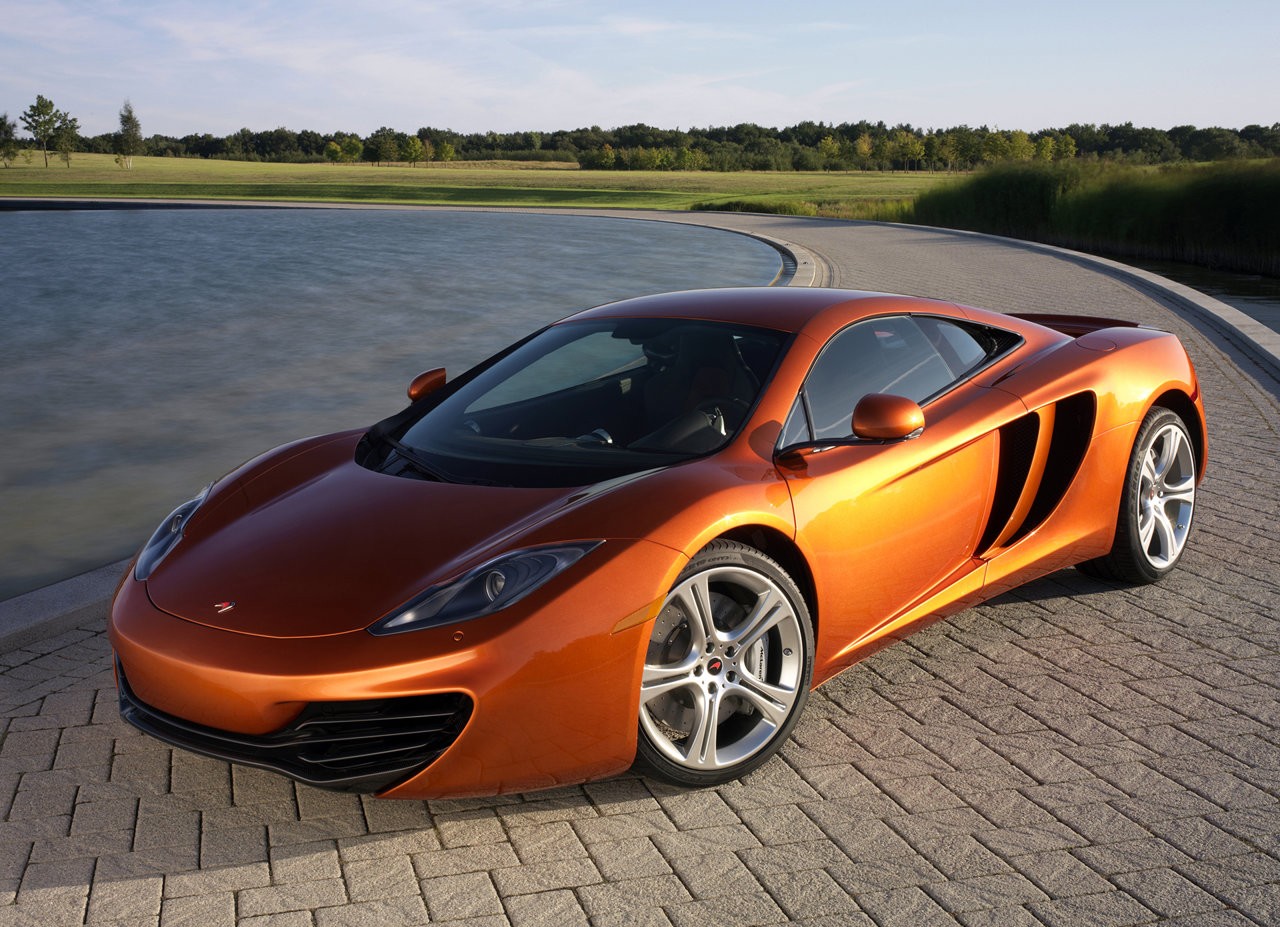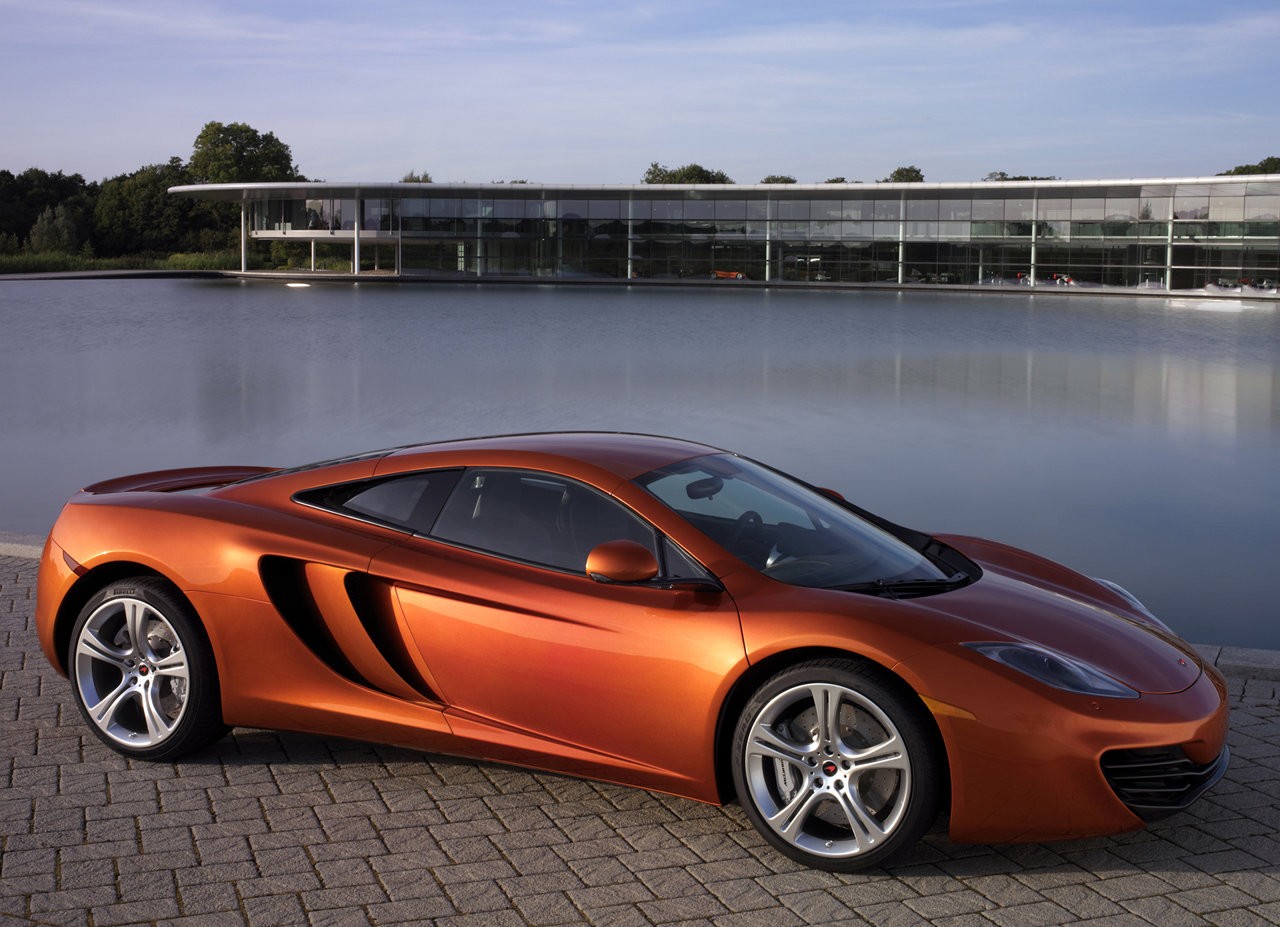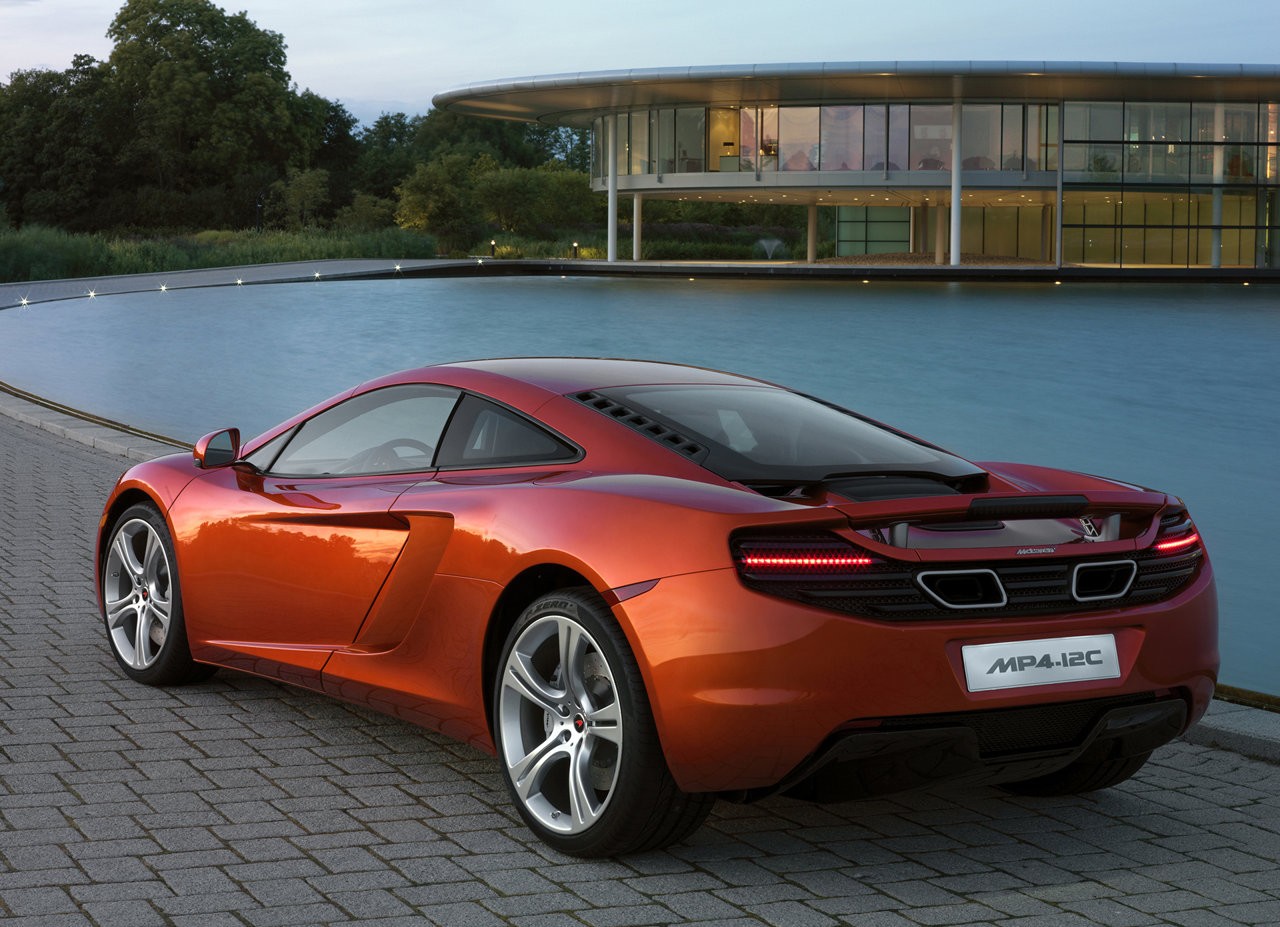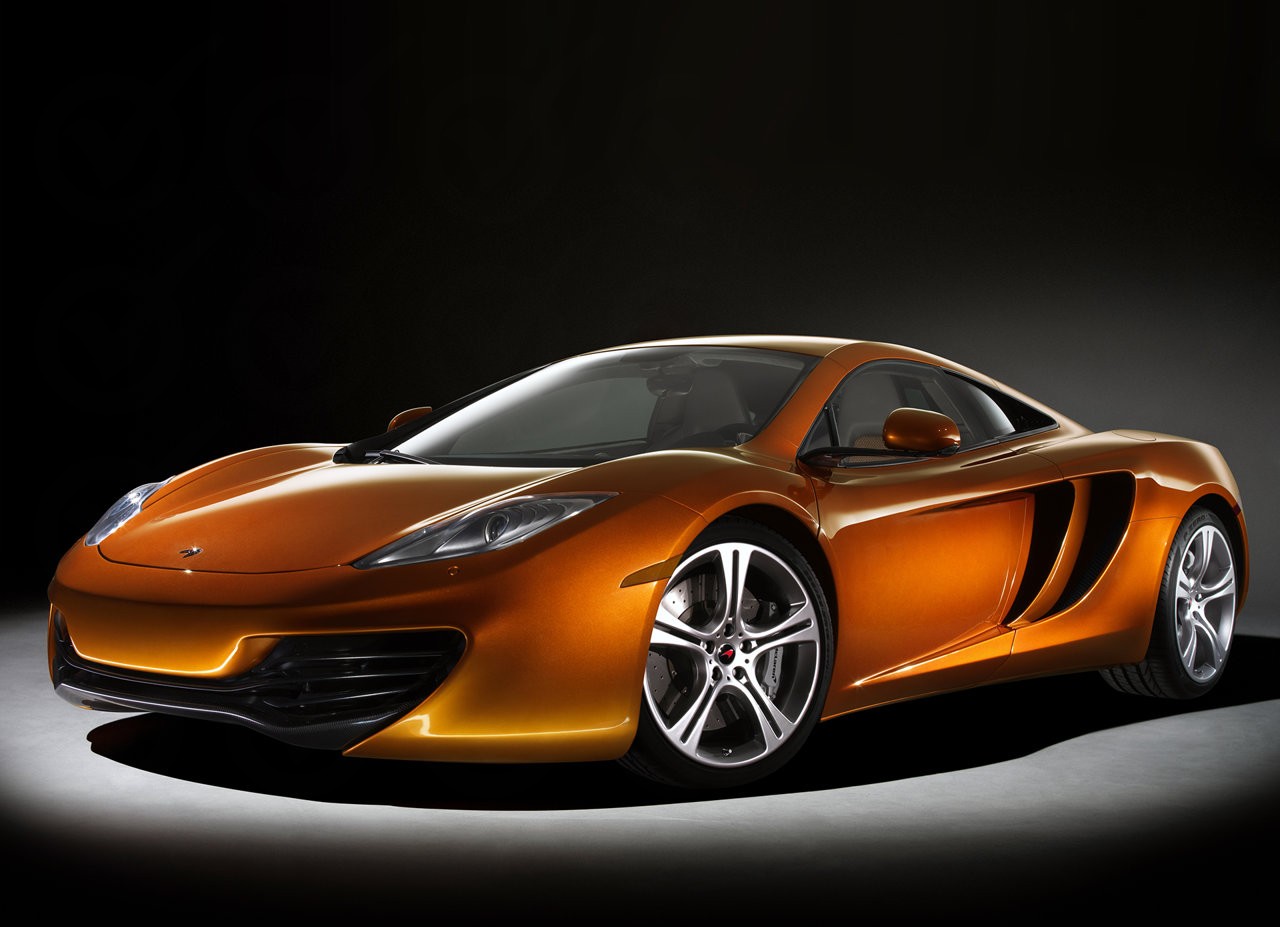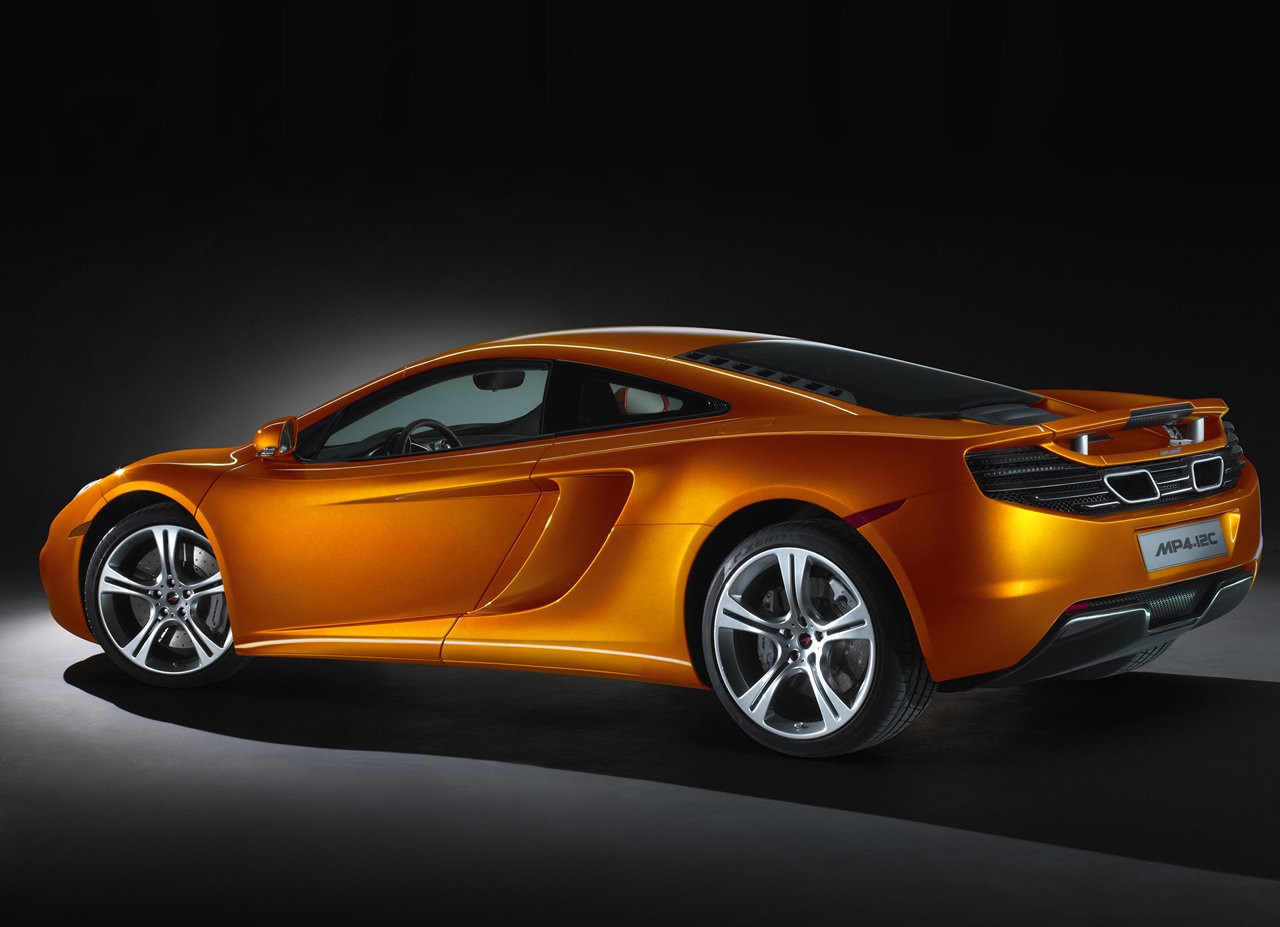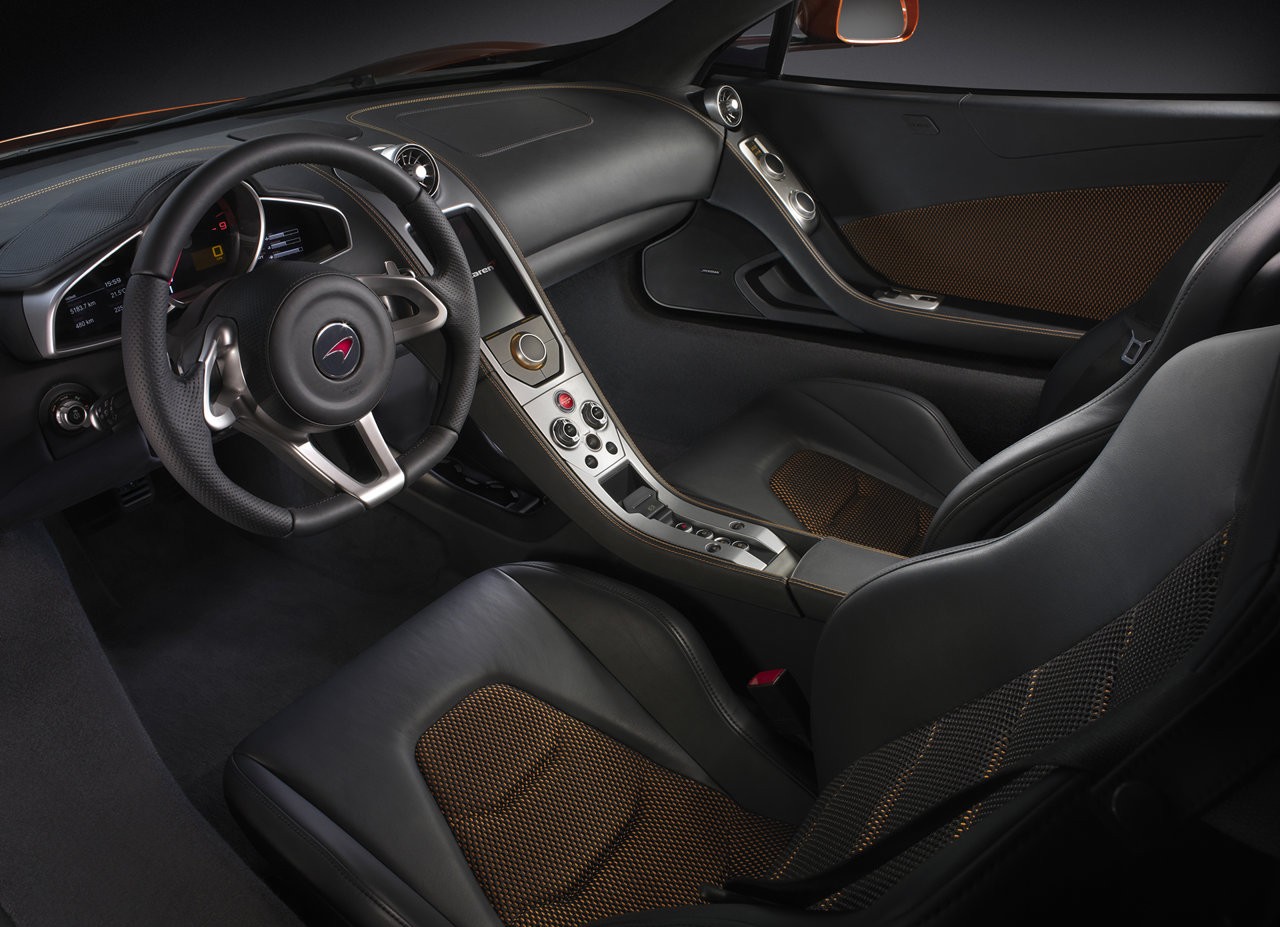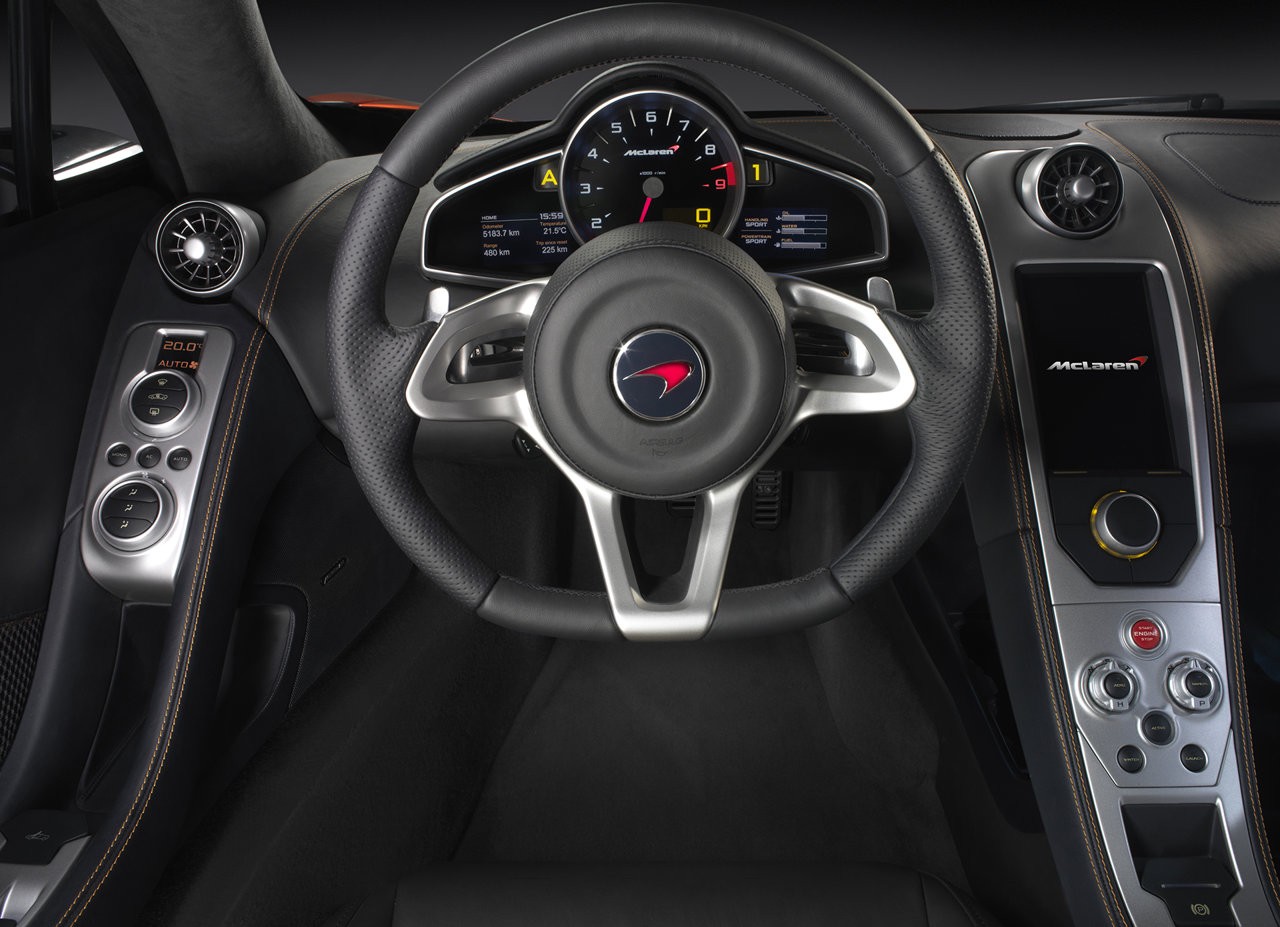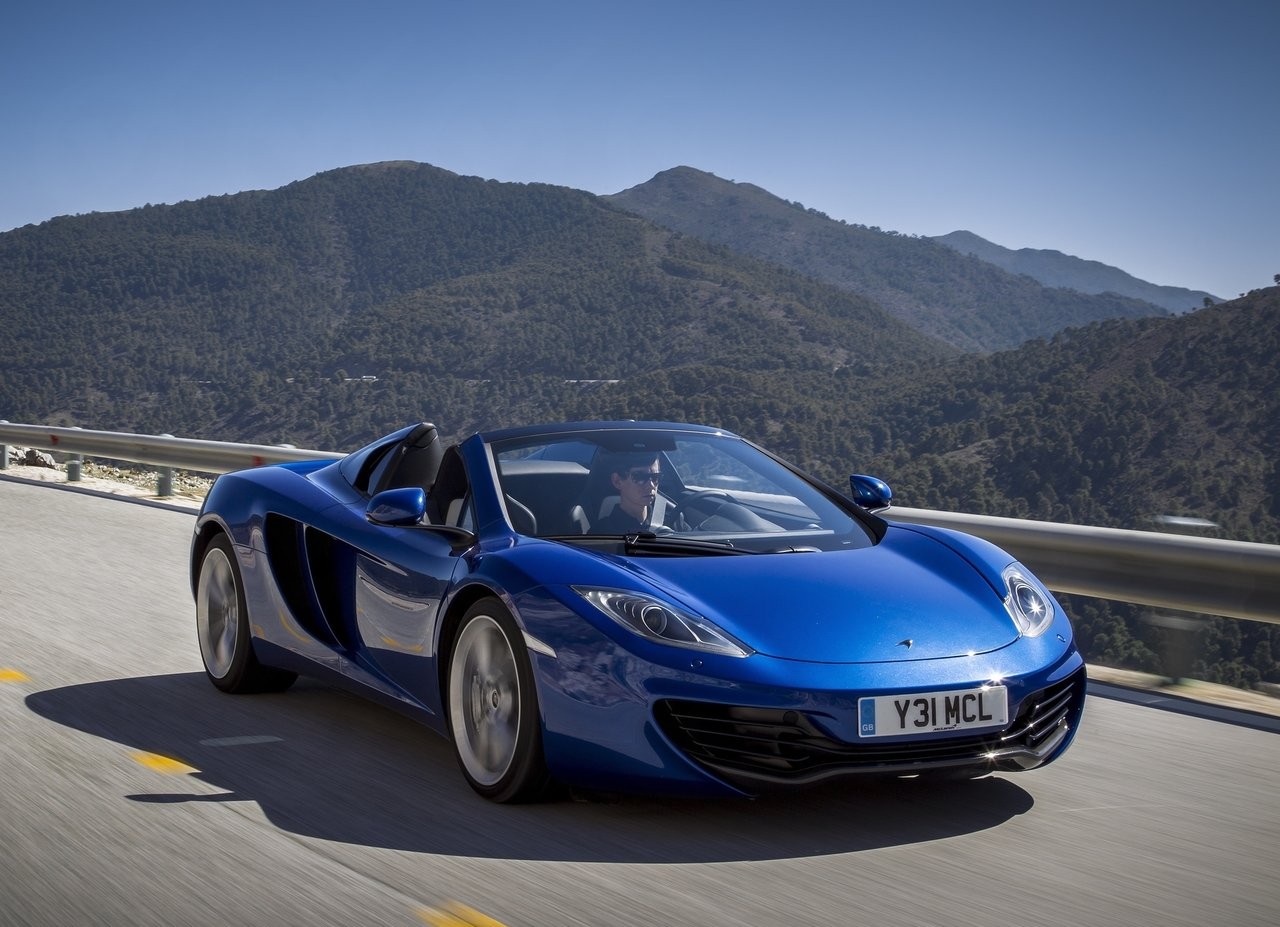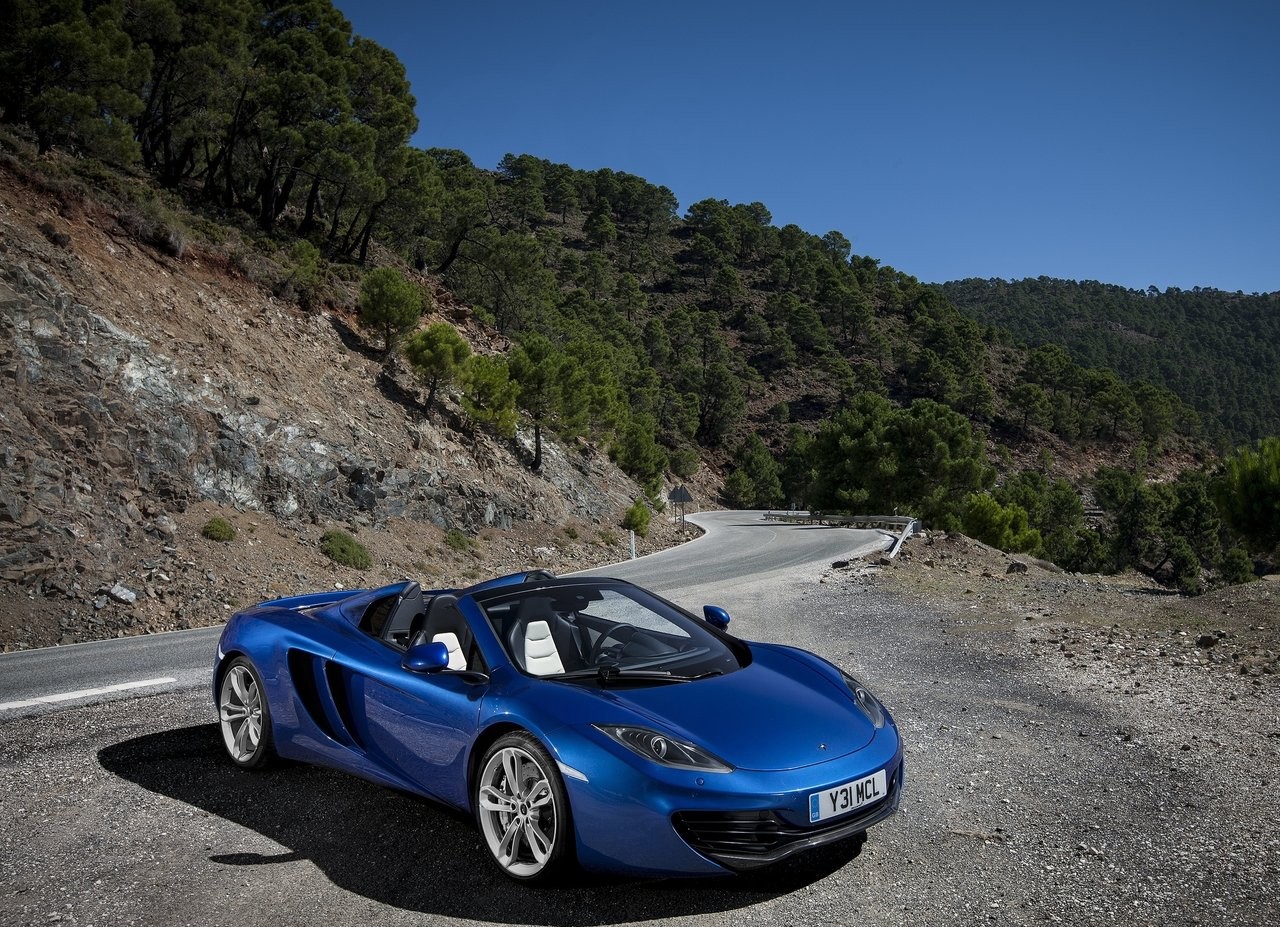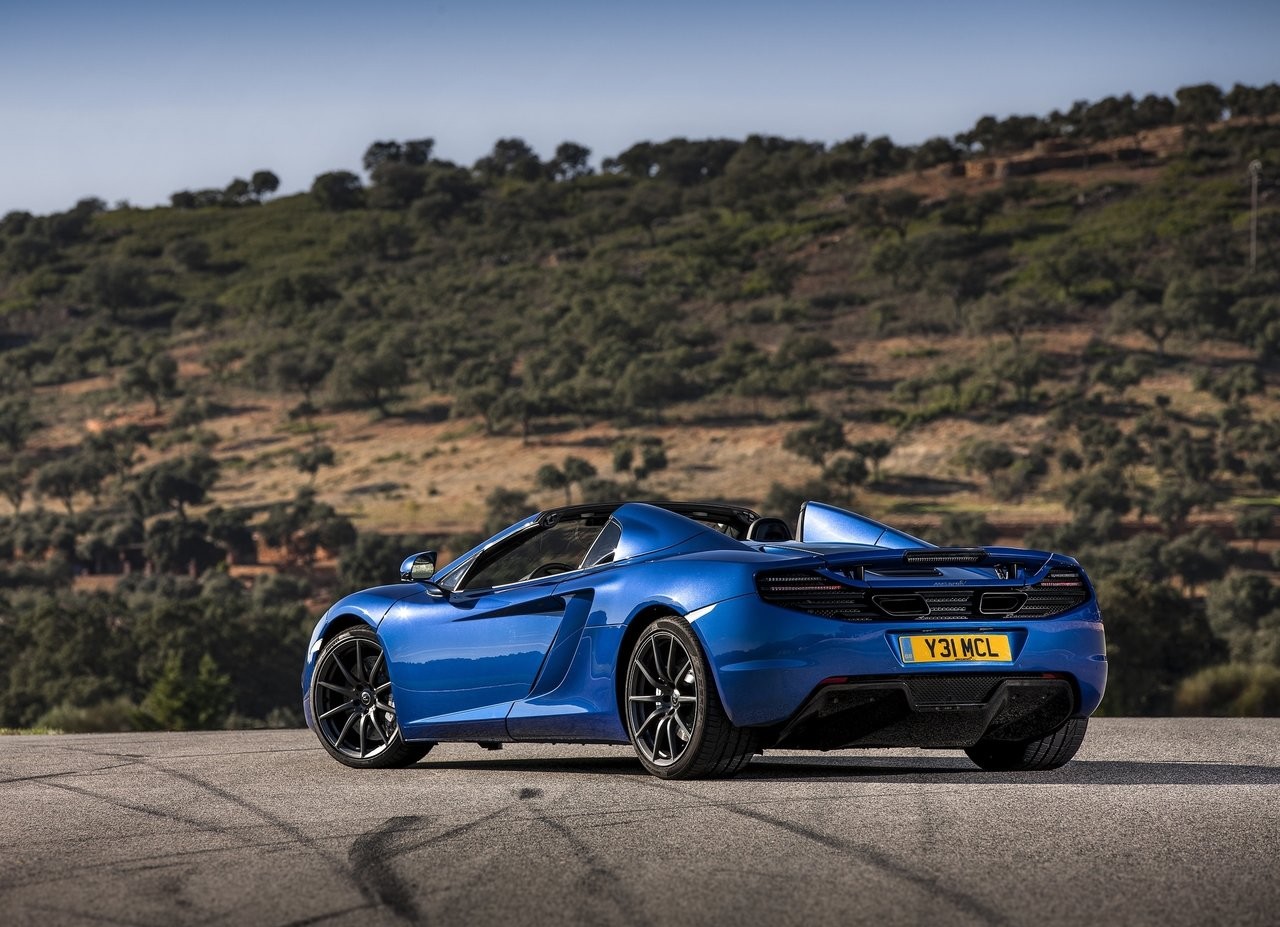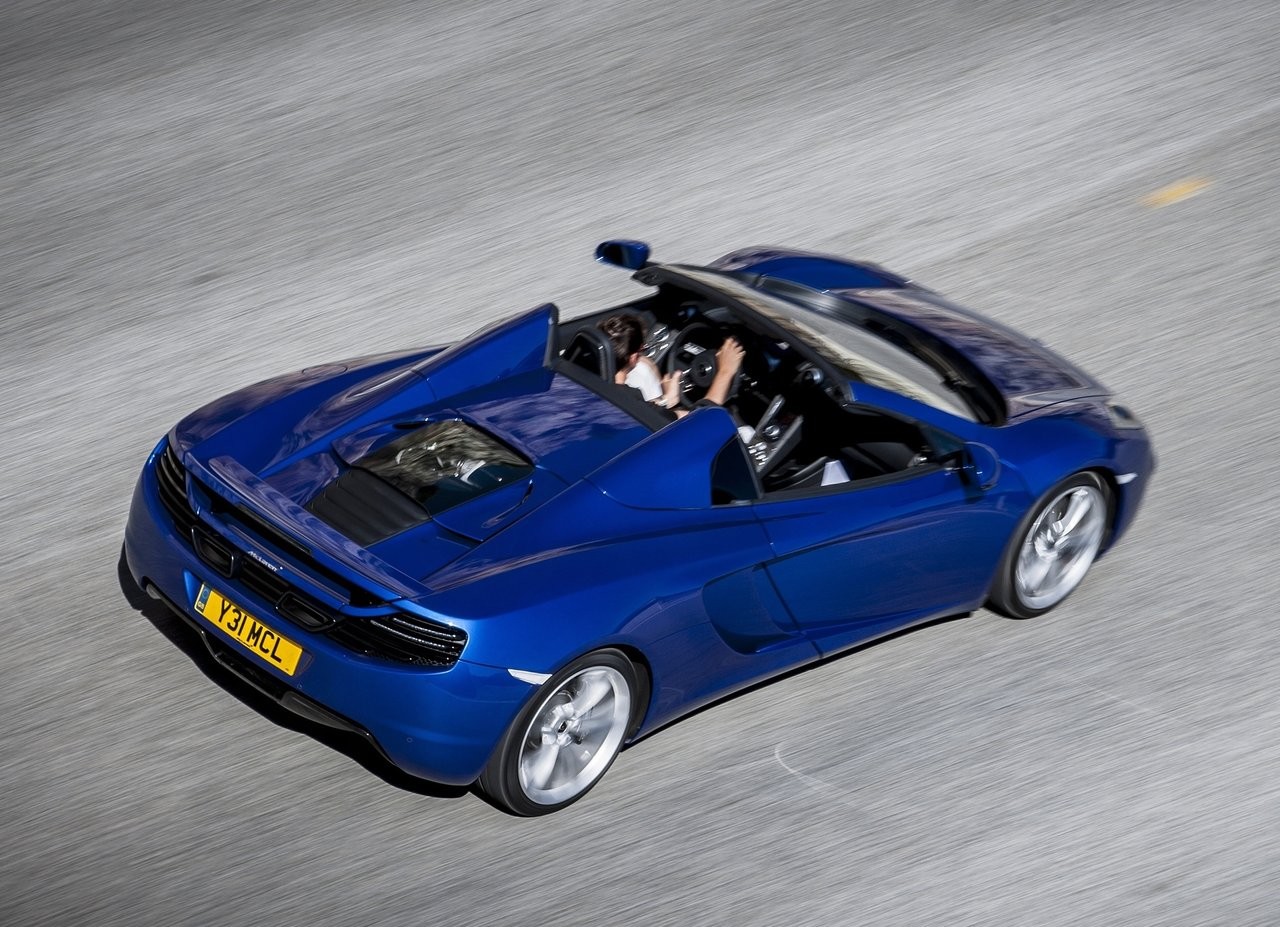
- Powerful 3.8-litre twin-turbo V8 engine
- Excellent dynamics
- Surprisingly compliant ride
- Accurate, linear steering provides good feedback
- Understeer at the limit
- Lacks aural excitement of Ferrari 458
- High maintenance costs
Overview
Released in November 2011, the MP4-12C was initially available as a two-door coupe, with Spider (convertible) models following in October 2012. Manufactured in Woking, England, the rear-wheel drive MP4-12C was powered by a mid-mounted 3.8-litre twin-turbo V6 petrol engine which was mated to a seven-speed double clutch transmission.
M838T engine and transmission
The 3.8-litre M838T twin-turbo V6 petrol engine which featured dry sump lubrication, a flat plane crankshaft, composite cam covers and intake manifolds and Nikasil-coated aluminium liners. The engine had an 8500 rpm redline, with 80 per cent of peak torque available from 2000 rpm.
The M838T engine was mated to a seven-speed dual clutch Seamless Shift Gearbox (SSG) with automatic and manual gearshift modes. In manual mode, gears were changed using an F1-style rocker shift that would pivot in the centre of the steering wheel and actuated on either side of the steering wheel (pulling right shifted up, pulling left shifted down). The gearbox also had a ‘Pre-Cog’ (pre-cognition) function whereby the gearshift rocker had two positions with a slightly different haptic (or feel) for each; the driver could apply pressure to the rocker to prepare the gearbox to change ratios; the second pressure then activated the gearshift.
The MP4-12C could accelerate from rest to 100 km/h in 3.3 seconds (on road tyres) and had a top speed of 330.5 km/h.
Chassis
The MP4-12C had a one-piece carbon fibre chassis (McLaren’s ‘MonoCell’) – which weighed less than 80 kg – with aluminium extrusions and castings jig welded into the finished assembly and bolted directly onto the chassis. The MP4-12C’s suspension consisted of double wishbones – front and rear – with coil springs and the dampers were interconnected hydraulically to provide adaptive responses according to road conditions and driver preferences – both the chassis and powertrain had selectable ‘normal’, ‘sport’ and ‘track’ modes. The MP4-12C also had a ‘Proactive Chassis Control’ system which provided adjustable roll control under heavy cornering and could decouple the suspension when driving in a straight line for superior wheel articulation and compliance.
Innovations
Innovations for the MP4-12C included a ‘Brake Steer’ system which would brake the inside rear wheel when the vehicle entered a corner too quickly for the intended radius; the system could also brake the same wheel when accelerating out of a corner. Under braking, an ‘Active Airbrake’ would be raised to provide additional downforce and yaw stability. Once a small amount of wing angle was pushed into the airflow, the centre of aerodynamic pressure would force the bottom of the ‘wing’ back, raising the airbrake to maximum angle using the ‘free’ airflow.
October 2012: MP4-12C Spider and updates
In October 2012, the 12C range was expanded with the introduction of Spider models. Developed in conjunction with the coupe, the 12C Spider had the same carbon-fibre MonoCell and no additional strengthening was required to compensate for the convertible. The 12C Spider had a fully-automatic, two-piece roof which could be raised or lowered in less than 17 seconds at speeds of up to 30 km/h. When lowered, the roof could be stowed under a body-coloured hard tonneau cover which incorporated twin buttresses. Furthermore, the rear window automatically moved into an ‘aero’ position when the roof was down to minimise buffeting.
From October 2012, both the MP4-12C coupe and Spider had new engine mapping and recalibration transmission software for improved throttle response and faster gearshifts (these updates could also be applied retrospectively). Other changes included:
- A new ‘Auto Lo’ mode for the climate control system that reduced the speed of the ventilation fans;
- Touch sensors on the doors were replaced with a button (though the doors could still be unlatched using the key fob); and,
- The introduction of a suspension lift function which – at speeds of up to 60 km/h – raised the vehicle by 40 mm at the front and 25 mm.
| Years | Engine | Trans. | Peak power | Peak torque | |
|---|---|---|---|---|---|
| MP4-12C | 2011-12 | 3.8-litre twin-turbo petrol V8 | 7sp DCT | 441 kW at 7000 rpm | 600 Nm at 3000-7000 rpm |
| 2012-14 | 3.8-litre twin-turbo petrol V8 | 7sp DCT | 459 kW at 7000 rpm | 600 Nm at 3000-7000 rpm |
Safety equipment
Standard safety equipment for the MP4-12C included dual front airbags, knee airbags for both front occupants, front side airbags, ABS, electronic brake force distribution, electronic stability control and traction control. The 12C Spider also had a passive roll over protection system in the form of steel structures within each of the rear buttresses.
The MP4-12C had forged aluminium hubs and cast iron brake discs with four piston calipers front and rear; carbon ceramic brakes were available as an option.
Features
Standard features for the MP4-12C included 19-inch front alloy wheels with Pirelli P-Zero 235/35 R19 tyres, 20-inch rear alloy wheels with 305/30 R20 tyres, a four speaker sound system with MP3/WMA/AAC compatibility and auxiliary inputs (USB/iPod), a seven-inch telematics touch screen, dual-zone climate control air conditioning, cruise control, bi-xenon headlights with LED running lights, rear fog lights, automatic headlights, rain-sensing wipers, remote central locking, power mirrors with heating and folding functions, automatically dipping door mirrors when reversing, a height adjustable driver’s seat, a proximity key, trip computer, power-operated park brake, motion-sensing alarm and an immobiliser.
Related links
